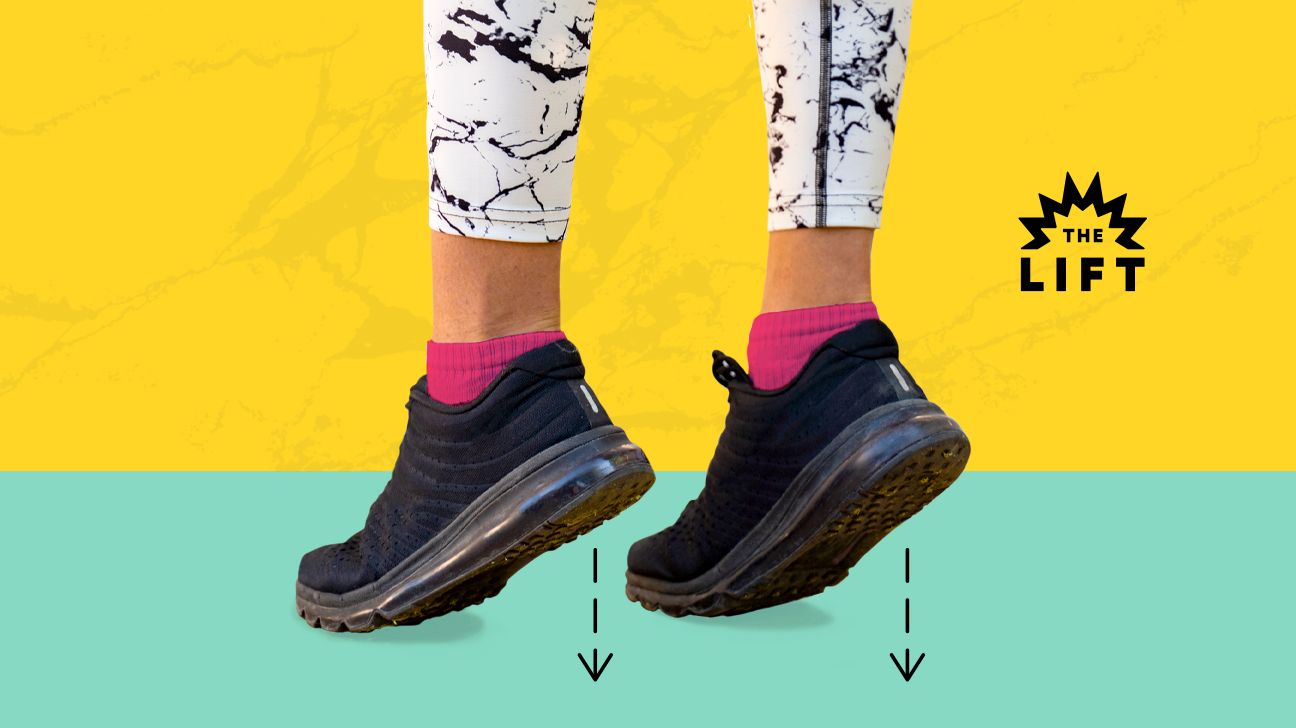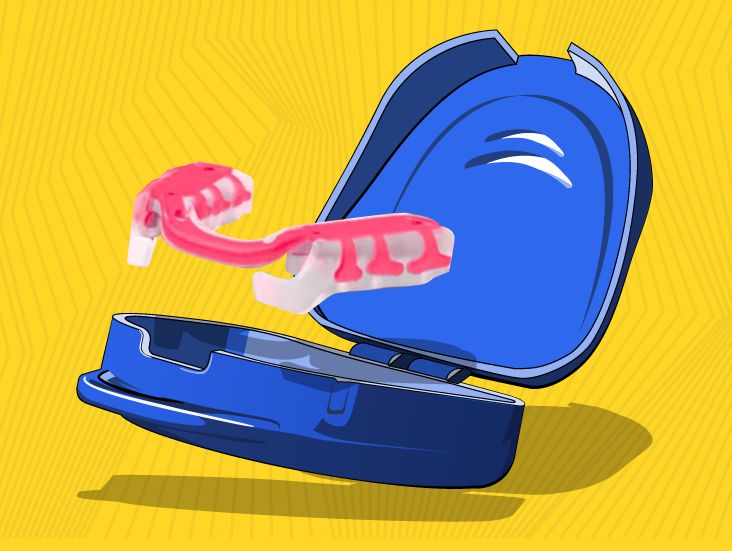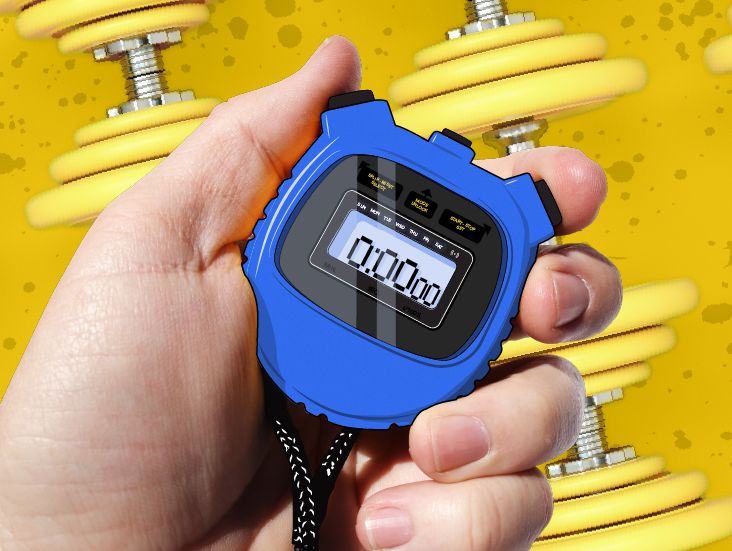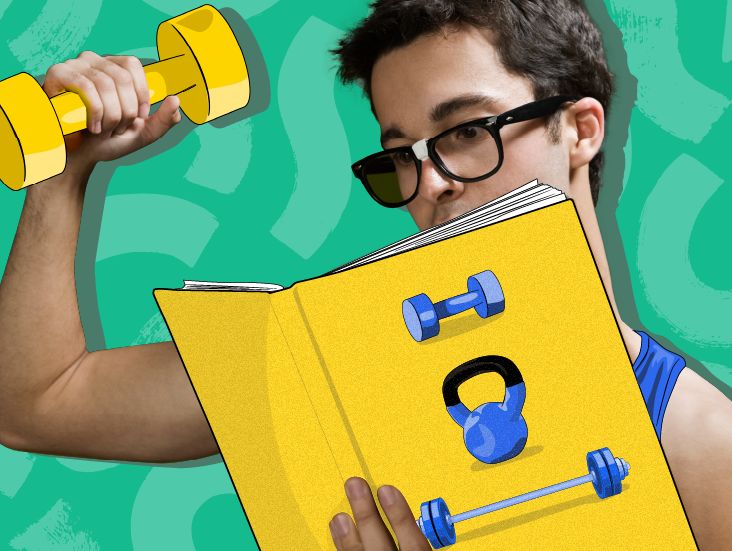
We include products we think are useful for our readers. If you buy through links on this page, we may earn a small commission. Here’s our process.
Greatist only shows you brands and products that we stand behind.
Our team thoroughly researches and evaluates the recommendations we make on our site. To establish that the product manufacturers addressed safety and efficacy standards, we:- Evaluate ingredients and composition: Do they have the potential to cause harm?
- Fact-check all health claims: Do they align with the current body of scientific evidence?
- Assess the brand: Does it operate with integrity and adhere to industry best practices?
If you’re going up on your tiptoes, it should be because you’re either a ballerina or you’re trying to reach something on the top shelf. You should absolutely *not* be doing it while squatting, deadlifting, or pressing weight overhead.
Why? In short, because it’s dangerous.
It’s all too common for exercisers to pop up onto their tiptoes during those 3 movements, according to New York-based certified strength and conditioning specialist Kristian Flores CSCS.
Read on to learn why some people go onto their toes during these movements, the risks involved with this, and how to fix it.
”First, when you go up onto your toes, it takes the work that your glutes and hamstrings were doing and puts it onto your quads,” says Flores. “As a result, the knee experiences more compression and shear force than it would if you were moving with good form, and the glutes and hamstrings could contribute to the lift,” he says.
Second — and it sounds obvious — but being on the tips of your toes is less stable than standing flat on your feet.
“To off-set the instability, your body has to look for that stability elsewhere,” says Flores. Often, your body turns to your lower back for that stability, which increases injury risk in that precious area.
The first step in fixing an issue?? Recognizing that you have one!
If you have access to a fitness professional, ask them to eyeball your feet while you squat, press, and pull. Trust, if you shift onto your tootsies, they’ll notice it.
Otherwise, take a video of yourself from the side while you lift and then play it back. This is one form flaw you can probably spot without a degree in exercise science.
There are six main reasons exercisers shift onto their toes during these movements, each of which has a slightly different solution.
1. It’s called “muscle memory” because your body always remembers what it practices
“Sometimes people go up onto their tiptoes not because they can’t stay on their heels, but because that’s what they’ve been practicing,” says Flores.
The fix: “With proper coaching and enough practice, someone can be coached to keep their heels down,” he says.
Cues that a coach might use to help someone remember to stay on their heels:
- “Push through your heels.”
- “Weight in your heels.”
- “Root yourself like a tree.”
- “Claw the ground.”
- “Screw your feet into the floor.”
Flores recommends mastering the movement without weight to start. “Only load the bar when you can execute the movement with proper, heel-on-the-ground, form,” he says.
2. Limited mobility makes you do it
“Some people go up onto their toes because it is physically impossible for them to complete the lift without [otherwise], due to mobility limitations,” says Flores.
Most commonly, limited mobility in your hip and ankle joints cause this.
The fix: The solution, here, as you might guess is mobility work! Try these 3 exercises for improved ankle mobility and these 11 hip-opening movements.
Flores also recommends foaming — rolling your calves and quads directly before lifting to open tight joints even further.
3. Your quads might be stronger than your hamstrings
According to Flores, a lifter is more likely to go up onto their toes during a movement if they are quad-dominant.
Quad-dominant is fitness-speak for “your quads are stronger than your hamstrings.” This is common in people with desk jobs or athletes who run a lot.
The fix: For these folks, the key to staying flat on their feet is to either strengthen their posterior chain (hamstrings, glutes, erector spinae muscle groups) or learn how to properly engage their posterior chain in the movement. For this, Flores recommends activation exercises like glute bridges, air squats, super humans, and banded good mornings.
4. You’re lifting with a poor stance
During squat movements, if your feet are too close together and your hip mobility varies (no shade, love!), Flores says the body is apt to roll forward.
This is for all bilateral squat movements including:
- squat cleans
- front squats
- back squats
- squat snatches
The fix: When you squat, you want your feet to be about shoulder-width apart plus or minus 1 or 2 inches. “This widened stance will make more room for your pelvis to drop straight down, which can help keep you from going onto your toes,” Flores says.
If your feet are already shoulder-width(ish) apart, and you’re still having heel-lift, rather than altering your stance again, add 5 minutes of ankle and hip mobility exercises into your daily routine.
5. Your footwear is basically a mattress
“How stable (or unstable) your footwear is will impact how you move,” according to Aoife Okonedo Martin, a personal trainer with Ultimate Performance.
For strength training, she says, you want to opt for a shoe with less cushion. Wearing something with more cushion (like running sneakers) can cause instability in your base (your feet).
The fix: Buy shoes designed for lifting like the Reebok Nano or Nike Metcon. “If your ankles are tight, you might even consider investing in a pair of lifters,” Flores adds.
6. You used to wear cushion-y sneakers
On the topic of squishy shoes… over time, those sneaks can actually change the structure of your foot in a way that impacts form!
“Cushion-y shoes encourage the arch of your foot to collapse, which can result in more weight being distributed to the front of the foot (rather than the center),” explains Martin.
And when your weight is distributed towards the front of your foot? You’re more likely to roll forward onto your tiptoes.
The fix: At this point, your best bet is to work with a podiatrist who can help develop an arch-strengthening regimen suited to you and your feet’s needs.





